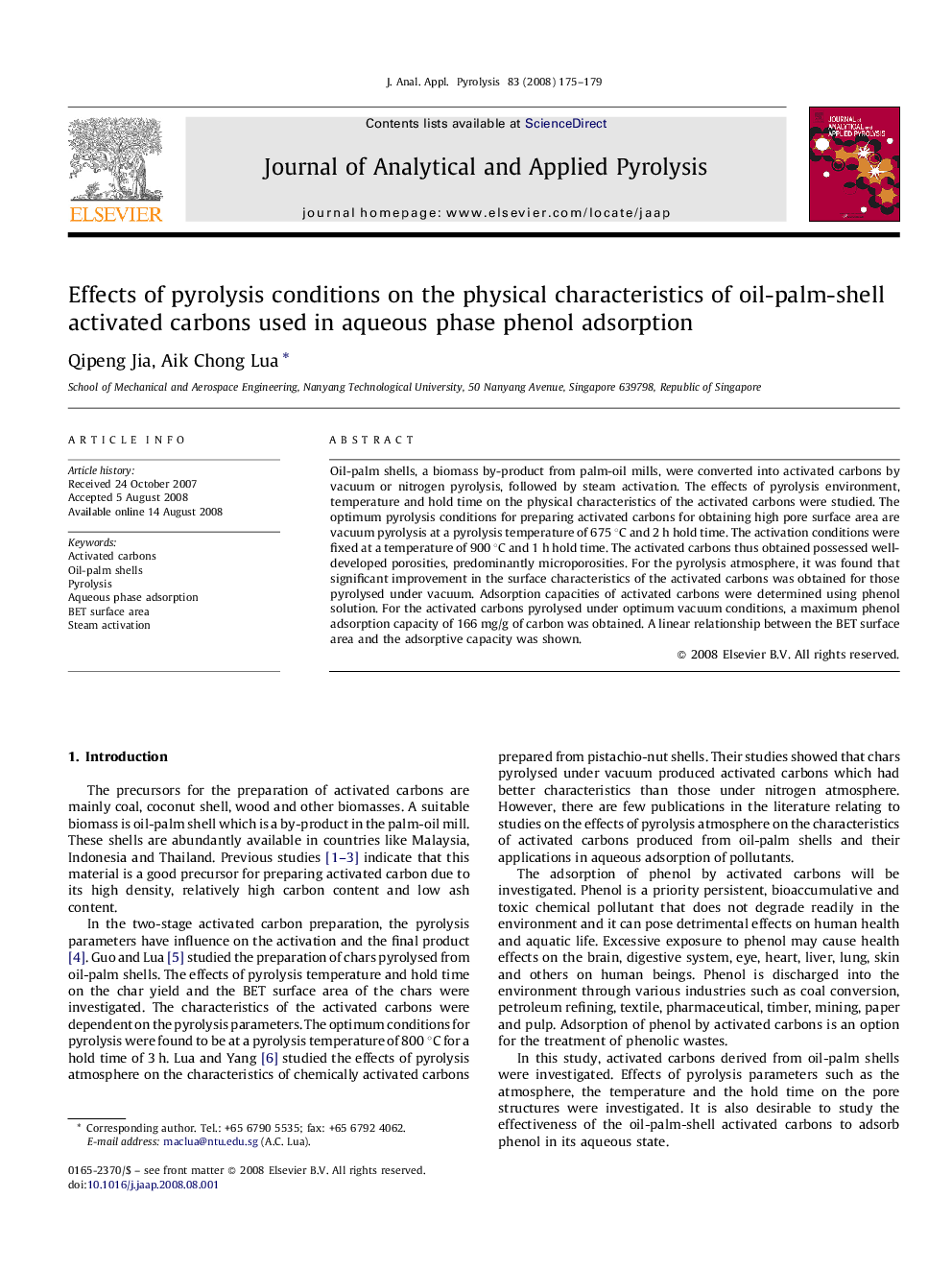| Article ID | Journal | Published Year | Pages | File Type |
|---|---|---|---|---|
| 1197124 | Journal of Analytical and Applied Pyrolysis | 2008 | 5 Pages |
Oil-palm shells, a biomass by-product from palm-oil mills, were converted into activated carbons by vacuum or nitrogen pyrolysis, followed by steam activation. The effects of pyrolysis environment, temperature and hold time on the physical characteristics of the activated carbons were studied. The optimum pyrolysis conditions for preparing activated carbons for obtaining high pore surface area are vacuum pyrolysis at a pyrolysis temperature of 675 °C and 2 h hold time. The activation conditions were fixed at a temperature of 900 °C and 1 h hold time. The activated carbons thus obtained possessed well-developed porosities, predominantly microporosities. For the pyrolysis atmosphere, it was found that significant improvement in the surface characteristics of the activated carbons was obtained for those pyrolysed under vacuum. Adsorption capacities of activated carbons were determined using phenol solution. For the activated carbons pyrolysed under optimum vacuum conditions, a maximum phenol adsorption capacity of 166 mg/g of carbon was obtained. A linear relationship between the BET surface area and the adsorptive capacity was shown.
